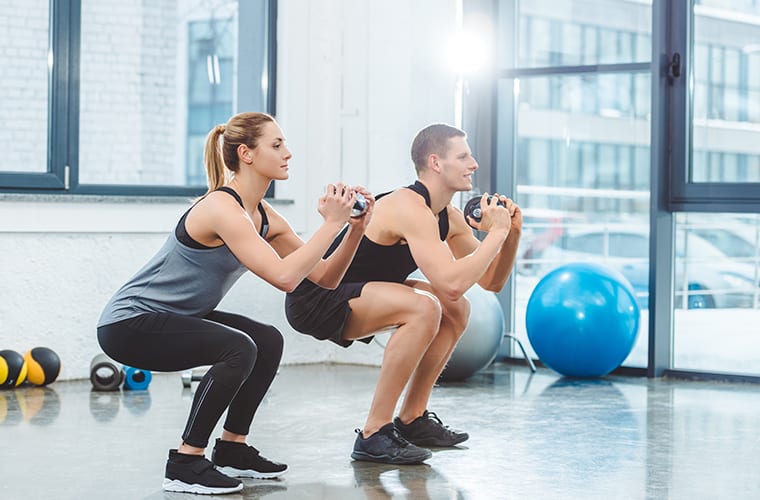
So, just how common is isometrics? The Activ5 may be the first fitness device of its kind, but it’s inspired by isometric exercises, which have been a staple of gyms and athletics for a very long time.
Isometric contractions, which are when muscles contract without moving, are actually common additions to dynamic and explosive strength training and cardio. So, whether you know it or not, you’ve likely used isometric training in your everyday workouts.
In honor of National Physical Fitness and Sports Month, we’re giving you some examples of the most important isometric exercises out there, many of which you’ve probably already done.
Weight Holds
Ever done shoulder raises with dumbbells? Because any time you hold a weight in place for a few seconds – that’s isometrics.
These exercises actually play a huge role in the world of weightlifting and powerlifting, especially when it comes to “sticking points.” Those are the positions or angles where you can’t lift anymore, or miss the rep.
To overcome the sticking point, people isometrically train at that specific angle by holding the weight at that position 6-10 seconds at a time.
Power Cleans
Yes, isometric exercises are absolutely crucial in exercises involving power and speed. Consider power cleans and Olympic lifts – many people pause during the “rack” movement, turning it into a rack hold.
The power rack, the training equipment for many weight lifters, is also based on isometrics. With its safety bars and pins, power racks offer resistance training in the form of static holds. So, for a lot of Olympic and professional lifters, isometrics is one the best acceleration training methods.
Yoga
With its focus on balance, endurance and holds, a majority of yoga postures are built on a foundation of isometrics. Chaturangas, Chair, Bridge, Warriors 1-3, Downward Dog, Crow Pose – they’re all static holds that maximally activate the core muscles.
Planks
The plank is probably the most well-known isometric exercise ever. And for good reason – it’s an impressive exercise that targets a wide range of muscles: ab muscles, erector spinae and the chest muscles.
Lunges
The hold at the end of the lunge is definitely an isometric workout. By holding at the end of each lunge for about 6-8 seconds, you can maximally target the quadriceps, hamstrings, glutes and calves.
Squats
And we’re not just talking about the front squat or back squat in weight-lifting – regular squats are a great way to exhaust the posterior chain, also known as the hamstrings, the glutes, erector spinae muscle group, trapezius, and deltoids.
Of course, this is just a small sampling of well known isometric exercises. With that in mind, let’s move to the first smart isometric device: the Activ5. With Activ5, you can finally measure and track your gains with extreme precision. With over a hundred different exercises, you can create your own anchor point, so you’ll never have to wonder whether your workout is actually, well, working.
Want to experience our progress tracker, coaching curve, plus get precise stats on max power and total weight lifted? Download the Activ5 Training App for Android or iOS, now.


